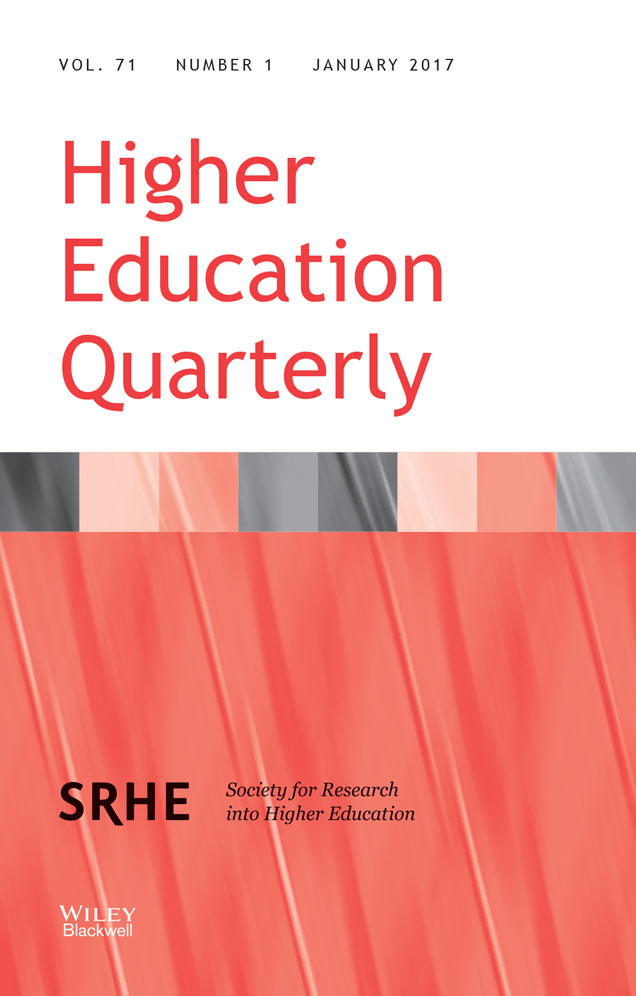Article
Towards Typology of Stakeholders: a Case of Lithuanian Higher Education
Simona Švaikauskienė, Birutė Mikulskienė,
Simona Švaikauskienė, Birutė Mikulskienė,
Abstract
The purpose of this paper is to explore internal management, advocacy and partnerships of interest groups with the aim of representing their interests in public policy formation with a view to developing a stakeholder typology. This qualitative study involves eight in-depth, semi-structured interviews with representatives from stakeholder organisations acting in Lithuania's higher education sector. The developed typology, which includes the analysed factors of capacity (organisational capacity, learning capacity, partnership capacity and advocacy capacity), comprises a description of three levels (strong, medium and weak). The suggested typology is a tool that could be used by public institutions to assess the capacity of stakeholders.
References
-
Andersson, F. O.,
Faulk, L. and
Stewart, A. J. (2015) Toward More Targeted Capacity Building: Diagnosing Capacity Needs Across Organizational Life Stages. VOLUNTAS: International Journal of Voluntary and Nonprofit Organizations, 27(6), pp. 2860–2888.
10.1007/s11266-015-9634-7 Google Scholar
- Benneworth, P. and Jongbloed, B. W. (2010) Who Matters to Universities? A Stakeholder Perspective on Humanities, Arts and Social Sciences Valorisation. Journal of Higher Education, 59, pp. 567–588.
- Bryson, J. M. (2004) Stakeholder Identification and Analysis Techniques. Persistent Organic Pollutants Toolkit, 6(1), pp. 21–53. Available at: http://doi.org/10.1080/14719030410001675722. Accessed 15 May 2016.
-
Bussy, N. M. and
Kelly, L. (2010) Stakeholders, Politics and Power: Towards an Understanding of Stakeholder Identification and Salience in Government. Journal of Communication Management, 14(4), pp. 289–305.
10.1108/13632541011090419 Google Scholar
-
Carayannis, E.,
Giudice, M.,
Rosaria, M. and
Peruta, D. (2014) Managing the Intellectual Capital within Government–University–Industry R&D Partnerships. Journal of Intellectual Capital, 15(4), pp. 611–630.
10.1108/JIC-07-2014-0080 Google Scholar
- Chris, B. and Sandberg, D. (2011) Capacity Building for Advocacy. International NGO Training and Research Centre: Praxis Paper 25. http://bistandstorget.no/files/docs/Praxis-Paper-25-Capacity- Building-for-Advocacy.pdf. Accessed 30 September 2016.
-
Dzisah, J. and
Etzkowitz, H. (2008) Triple Helix Circulation: the Heart of Innovation and Development. International Journal of Technology Management and Sustainable Development, 7(2), pp. 101–115.
10.1386/ijtm.7.2.101_1 Google Scholar
- Elliott, G. L. (2003) Measuring Capacity and Capacity Building in Nonprofit Organizations: a Large Sample Study of Americorps VISTA. Paper presented at 32nd Annual Conference of the Association for Research on Nonprofit Organizations and Voluntary Action, Denver, CO. 20–22 November.
- European Commission (2010) Communication from the Commission EUROPE2020: a Strategy for Smart, Sustainable and Inclusive Growth. Available at: http://ec.europa.eu/index_en.htm. Accessed 30 May 2016.
-
Evans, J. W. and
Davies, R. (2014) Too Global To Fail: The World Bank at the Intersection of National and Global Public Policy in 2025, Washington, D.C: World Bank Publications, p. 310.
10.1596/978-1-4648-0307-9 Google Scholar
- Gorli, M., Galuppo, L., Pezzana, P., Scaratti, G. and Shani, A. B. (2014) Innovating Health Care through Multi-stakeholder Partnership: the Welfare Italia Servizi Case. In C. G. Worley and P. H. Mirvis (eds.), Building Networks and Partnerships (Organizing for Sustainable Effectiveness, Volume 3). Bingley: Emerald, pp. 133–164.
- Hatier, C. (2014) The Morality of University Decision-Makers. Studies in Higher Education, 39(6), pp. 1085–1096.
- Jongbloed, B., Enders, J. and Salerno, C. (2008) Higher Education and its Communities: Interconnections, Interdependencies and Research Agenda. High Education, 56, pp. 303–324.
- Jurie, J. D. (2000) Building Capacity. Organizational Competence and Critical Theory. Journal of Organizational Change Management, 13(3), pp. 264–274.
- Krishnaveni, R. and Sujatha, R. (2013) Institutional Capacity Building: a Systematic Approach. SCMS Journal of Indian Management, X(4), pp. 17–23.
- Leišytė, L. and Westerheijden, D. F. (2013) Students as Stakeholders in Quality Assurance in Eight European Countries. Research on Quality of Higher Education, 10, pp. 12–27.
- Leventon, J., Luuk Fleskens, B., Heleen Claringbould, B., Gudrun Schwilch, B. and Rudi Hessel, B. (2016) An Applied Methodology for Stakeholder Identification in Transdisciplinary Research. Sustainability Science, 11(5), pp. 763–775. Available at: http://doi.org/10.1007/s11625-016-0385-1. Accessed 30 May 2016.
- Liljemark, T. (2004) Innovation Policy in Canada. Strategy and Realities. Stockholm: Swedish Institute for Growth Policy Studies. Available at: https://www.tillvaxtanalys.se/download/18.6a3ab2f1525cf0f4f95eb86/1453901723649/Innovation+Policy+in+Canada-04.pdf. Accessed 26 April 2016.
-
Logermann, F. and
Leišytė, L. (2015) Students as Stakeholders in the Policy Context of the European Standards and Guidelines for Quality Assurance in Higher Education Institutions. In: A. Curaj, L. Matei, R. Pricopie, J. Salmi and P. Scott (eds.), The European Higher Education Area: Between Critical Reflections and Future Policies. Dordrecht: Springer, pp. 685–701.
10.1007/978-3-319-20877-0_43 Google Scholar
- Mainardes, E. W., Alves, H. and Raposo, M. (2012) A Model for Stakeholder Classification and Stakeholder Relationships. Journal of Management History, 50(10), pp. 1861–1879.
- McAndrews, C. and Marcus, J. (2015) The Politics of Collective Public Participation in Transportation Decision-Making. Transportation Research Part A: Policy and Practice, 78, pp. 537–550.
-
Mello, C. J. M. and
Etzkowitz, H. (2008) New Directions in Latin American University–Industry–Government Interactions. The International Journal of Technology Management and Sustainable Development, 7(3), pp. 193–204.
10.1386/ijtm.7.3.193_1 Google Scholar
- Mitchell, R. K., Agle, B. R. and Wood, D. J. (1997) Toward a Theory of Stakeholder Identification and Salience: Defining the Principle of Who and What Really Counts. Academy of Management Review, 22(4), pp. 853–866.
-
Ramachandra, A. and
Mansor, N. A. (2014) Sustainability of Community Engagement—in the Hands of Stakeholders? Education + Training, 56(7), pp. 588–598.
10.1108/ET-07-2014-0084 Google Scholar
-
Reavill, L. R. P. (1998) Quality Assessment, Total Quality Management and the Stakeholders in the UK Higher Education System. Managing Service Quality: an International Journal, 8(1), pp. 55–63.
10.1108/09604529810199395 Google Scholar
- Servaes, J. and Malikhao, P. (2010) Advocacy Strategies for Health Communication. Public Relations Review, 36(1), pp. 42–49.
- Shaw, D. (2014) Advocacy: The Role of Health Professional Associations. International Journal of Gynecology and Obstetrics, 127(1), pp. 43–48.
- Sobeck, J. and Agius, E. (2007) Organizational Capacity Building: Addressing a Research and Practice Gap. Evaluation and Program Planning, 30, pp. 237–246.
- Suarez, D. and Marshal, J. H. (2014) Capacity in the NGO Sector: Results from a National Survey in Cambodia. International Society for Third Sector Research, 25, pp. 176–200.




